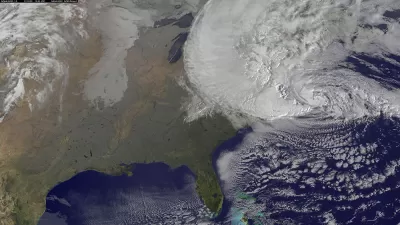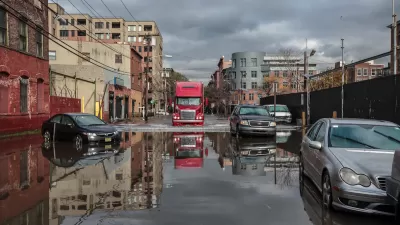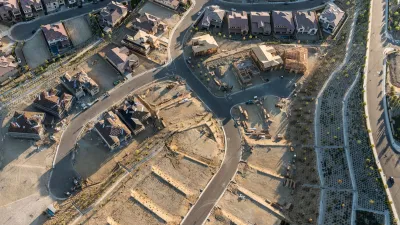Ben Brown takes a hard look at our capacities and limitations in a world more complex than we’d prefer.

"So here we go again. Flood waters rise in southern Louisiana, displacing tens of thousands — some temporarily, others permanently — and potentially costing billions."
"The familiar narrative cycle has cranked up. Right now we’re emerging from the stage where we celebrate the heroism of citizens, volunteers and emergency responders and question the competency of the feds. Next comes the rough accounting of damages and the fights over funding, then the agonizing slog towards a recovery unlikely to ever be complete. Finally will come a lessons-learned wrap-up that could be copied and pasted from reports post-Camille, post-Andrew, post-Katrina, post-Sandy and post a bunch of other recent calamities without a name."
"How to be ready for the next Big One? Better communication at all levels of emergency response. Better advance warning systems. Better ways to prevent folks from living in harm’s way. Same old. If there’s something different this time, it may be this: An increasing uneasiness that we have spent down our capacities for denial, along with the resources required to cope with repetitive disaster. And there’s no turning back."
Ben Brown has been intricately involved in the post-Katrina recovery, as well as the BP Oil Spill. He gives a candid review of new politics for a new normal.
FULL STORY: Unpredictable, High Risk, High Cost: Planning for the worst is the worst

Study: Maui’s Plan to Convert Vacation Rentals to Long-Term Housing Could Cause Nearly $1 Billion Economic Loss
The plan would reduce visitor accommodation by 25,% resulting in 1,900 jobs lost.

North Texas Transit Leaders Tout Benefits of TOD for Growing Region
At a summit focused on transit-oriented development, policymakers discussed how North Texas’ expanded light rail system can serve as a tool for economic growth.

Why Should We Subsidize Public Transportation?
Many public transit agencies face financial stress due to rising costs, declining fare revenue, and declining subsidies. Transit advocates must provide a strong business case for increasing public transit funding.

How to Make US Trains Faster
Changes to boarding platforms and a switch to electric trains could improve U.S. passenger rail service without the added cost of high-speed rail.

Columbia’s Revitalized ‘Loop’ Is a Hub for Local Entrepreneurs
A focus on small businesses is helping a commercial corridor in Columbia, Missouri thrive.

Invasive Insect Threatens Minnesota’s Ash Forests
The Emerald Ash Borer is a rapidly spreading invasive pest threatening Minnesota’s ash trees, and homeowners are encouraged to plant diverse replacement species, avoid moving ash firewood, and monitor for signs of infestation.
Urban Design for Planners 1: Software Tools
This six-course series explores essential urban design concepts using open source software and equips planners with the tools they need to participate fully in the urban design process.
Planning for Universal Design
Learn the tools for implementing Universal Design in planning regulations.
City of Santa Clarita
Ascent Environmental
Institute for Housing and Urban Development Studies (IHS)
City of Grandview
Harvard GSD Executive Education
Toledo-Lucas County Plan Commissions
Salt Lake City
NYU Wagner Graduate School of Public Service





























